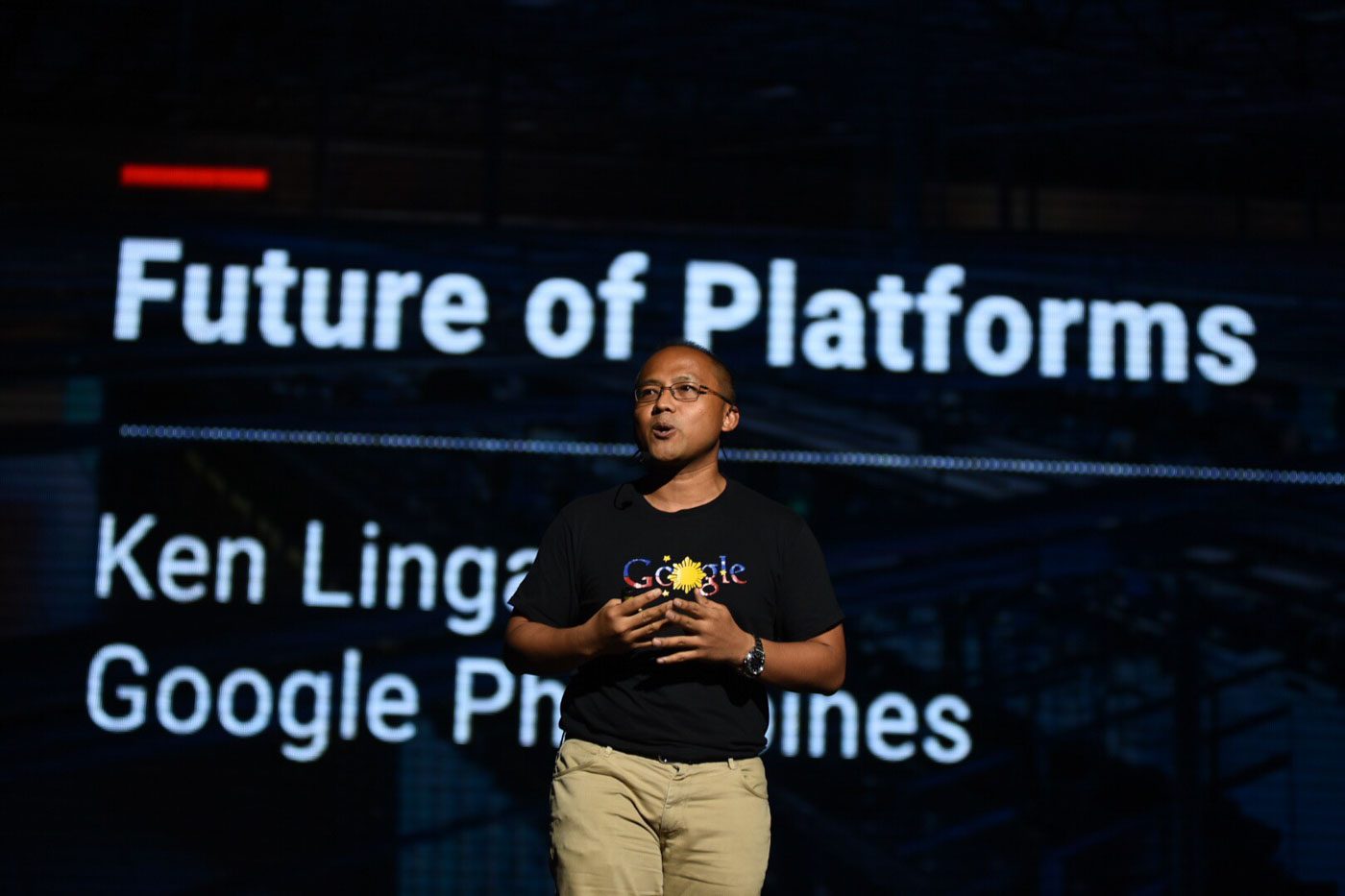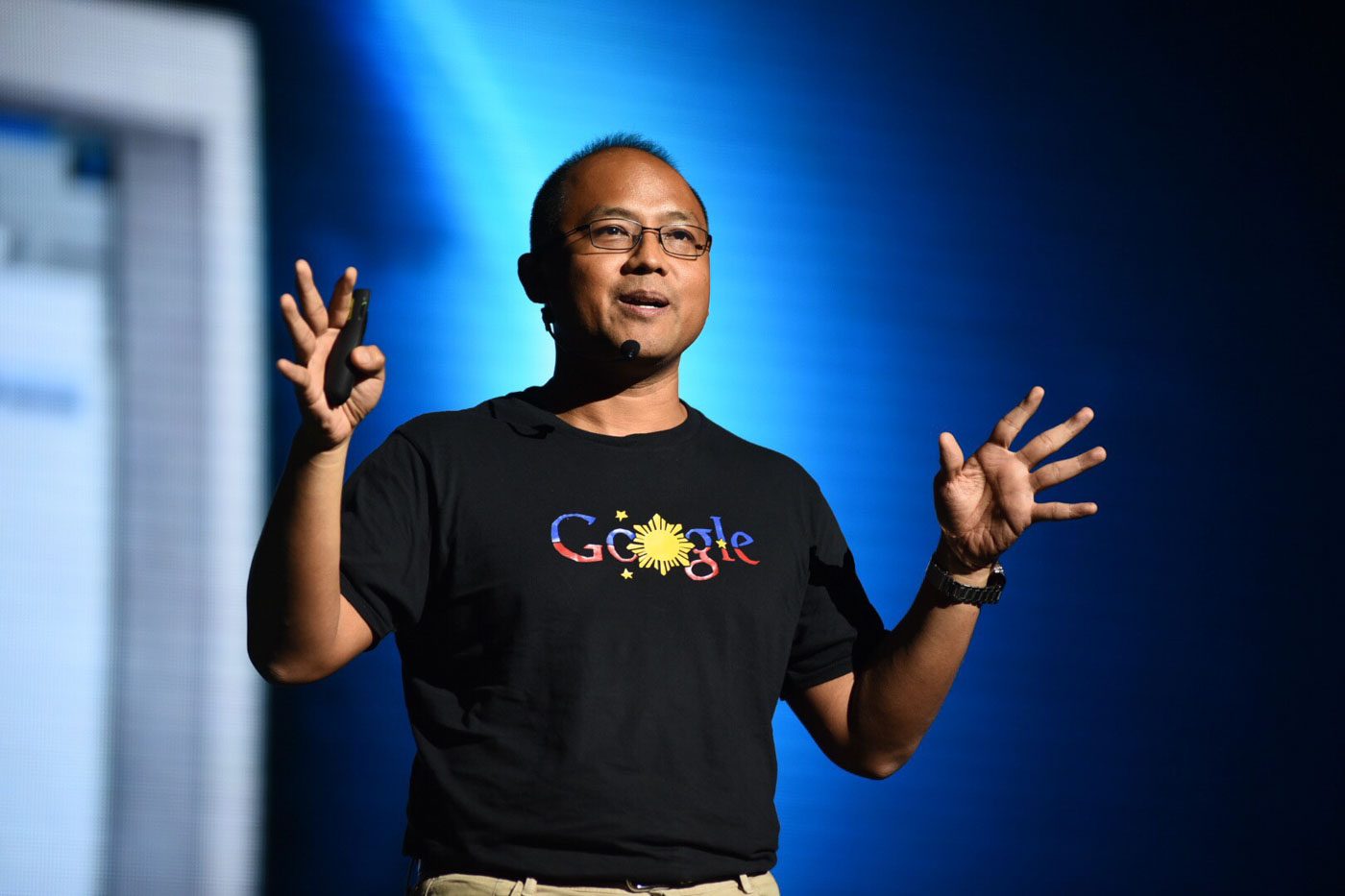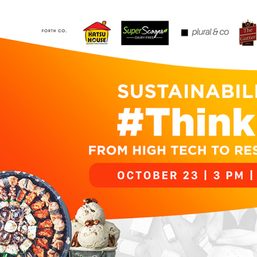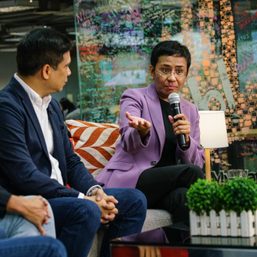SUMMARY
This is AI generated summarization, which may have errors. For context, always refer to the full article.

Missed this year’s #ThinkPH summit? Join the #ThinkPH viewing party on Saturday, September 10! Get your tickets here.
MANILA, Philippines – Sixteen years ago, you had to fork out somewhere in the range of $1,000 to afford a desktop computer. Today, that computer’s power can be had in the palm of your hands through a smartphone.
Ken Lingan, Google’s country manager for the Philippines, offers this detail as one of the probable explanations to the boom in the amount of internet users today.
Today’s smartphones have the computing power necessary to do what a “clunky device” like yesteryear’s laptops or desktops could do – including connecting to and harnessing the power of the internet. This shift from stationary computing to mobile computing, he says, is the challenge that we are all facing now – including a tech giant like Google – during his talk entitled “The Future Of Platforms” at Rappler’s #ThinkPH event at Resorts World Manila last July 21, Thursday. (Check the stellar lineup of speakers here)
Reinforcing his claim, Lingan notes that in the year 2000, there were 400 million people online. Today, there are 3 billion, 66 percent of which are coming from emerging markets. That includes the Philippines, which reached 50 million internet users last year.
This, according to him, is a milestone: “Majority of the Filipinos are now online.” Just as important: the fact that internet users in the country is growing by 500,000 every month. “In an annual basis,” he adds, “that’s almost more than the size of the population of Singapore. It’s really an exciting time, particularly here in the Philippines where more and more people are coming online primarily through a mobile device. In fact, it’s not anymore mobile-first, but in most cases, it’s mobile only.”
We’ve gone mobile
The cards have been laid out: Filipinos are online, connecting through a mobile device. Mobile phones have created a positive disruption, a game-changer.
How does a tech giant like Google, itself a game-changer in numerous ways, approach the disruption? By recognizing it, acknowledging it, and evolving according to the new rules that the mobile-first era has brought about.
Lingan reveals Google’s underlying principles that guide their decision-making through this sea change:
- Always think of the user first.
- Recognize that ideas can come from practically anywhere.
- Empower users to maximize the scale of reach and the speed of reaching people that mobile affords.

A user-first approach
Lingan on thinking of the user first: “It’s not about the product, it’s not about the platform, it’s all about serving the user. We have a mantra at Google: ‘When you focus on the user, everything else will follow.’” He translates the mantra into a question: “How do we make it a delightful experience?”
With YouTube, internet speeds have been an endemic problem in the Philippines. Connections simply haven’t been consistent enough to sustain the demands of a YouTube video.
To address that, Google launched “YouTube Offline,” a feature which allows users to watch videos even with low or no connectivity. The feature has also been adapted to Google Maps, and soon for other Google applications, too.
In this environment which Lingan describes as “bandwidth-challenged,” they simply cannot wait for infrastructure to happen and have to deploy solutions on their own. That’s what they mean by thinking of the user.
Google’s search prediction technology, which answers queries before you can even finish typing; Google Now, a personal assistant that suggests information relevant to your interests; the unreleased Google messaging app, Allo, which features the voice-activated Google Assistant; and predictive response technologies in Gmail as well as Google Translate all reflect the company’s user-first stance, according to Lingan.
Mobile users as eyes and ears
On to the second point, the users themselves and the information they provide are an integral part of the Google machinery too, Lingan says. “Ideas can come from practically anywhere. We alone could not do it. We need to tap into our growing number of users.”
Google wants to make it easier for people to provide information on their platforms. As Google sees it, the millions of mobile users aren’t just customers, they’re partners in providing real-life feedback about say, a restaurant or traffic conditions.
It’s not a new thing. Waze has already been doing that to cite one example. But what Google wants to do is to continuously make the process easier such as in Google Maps’ “Local Guides” feature, which lets people put information about places of interest as an example. They want to make it easier for people to give feedback because as Lingan puts it, “The more that people contribute to the internet, the richer the information and the more value that we create for everyone.”
Google wants to do it for businesses too, and not just end users. Right now, only one percent of the one million small and medium-sized enterprises (SMEs) in the Philippines have a website. Only 10 percent have online presence through social networks. They want to raise that number.
How? One Google-powered platform may help, Lingan says: “We have a platform called ‘Google My Business’ where you could put relevant information – location, closing time – and the moment [it is] validated, your business could immediately be found in Maps, search and Google Plus.”
Empowerment through platforms
In Google’s third principle, what they’re saying is that they’re aware of the sheer number of people any one person on the internet can reach out to. There’s really no boundary, technically.
Google wants to make people even more aware of this boundary-less existence. Whatever work it is you do – a publisher, a software developer, a merchant – the world is your market. “The internet levels the playing field. It doesn’t matter if you’re a big business or a small business,” says Lingan.
They do it by developing platforms that individuals can use to springboard their ideas from their bedroom and into the 3 billion people currently on the internet. There’s the one-billion-strong Google Play Store, on which Filipino developer Altitude Games who “reached a target beyond the Philippines,” according to Lingan, and YouTube, of course.
In Indonesia, Lingan recalls how the information that’s readily accessible on Google Maps enabled the success of motorcycle-based delivery and mobility app called Go-Jek. In these examples, we can see how platforms can empower and allow any individual to enhance their scale and reach instantaneously and immensely.
“What we’re really excited about is, imagine, the next billion users not just having access, not just consuming the internet but also contributing to the internet. And the more they contribute – that’s really the power of platforms – the more we could create value for everyone on the internet,” Lingan concludes. – Rappler.com
Want to work for some of the best companies in the Philippines? Click here to apply.
Add a comment
How does this make you feel?





There are no comments yet. Add your comment to start the conversation.